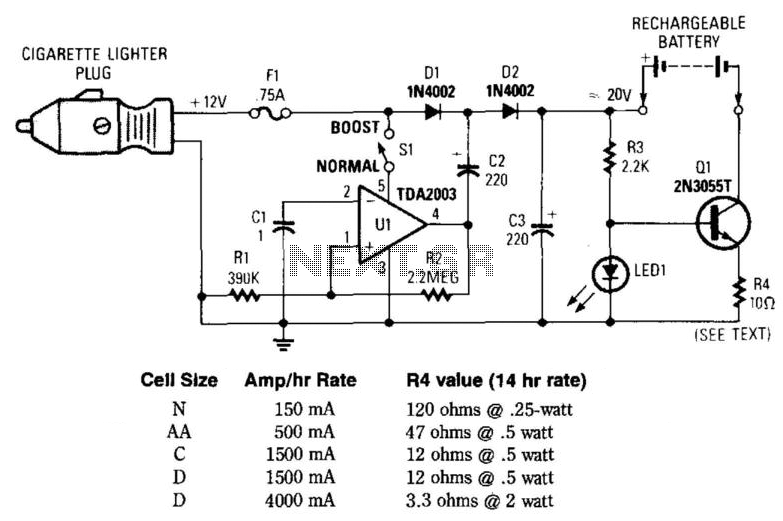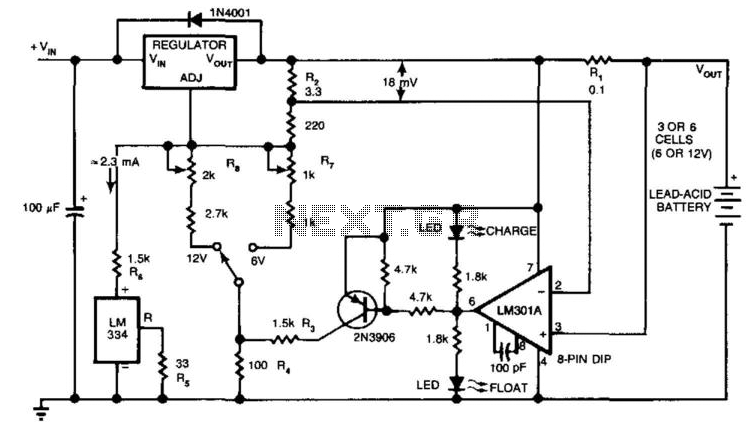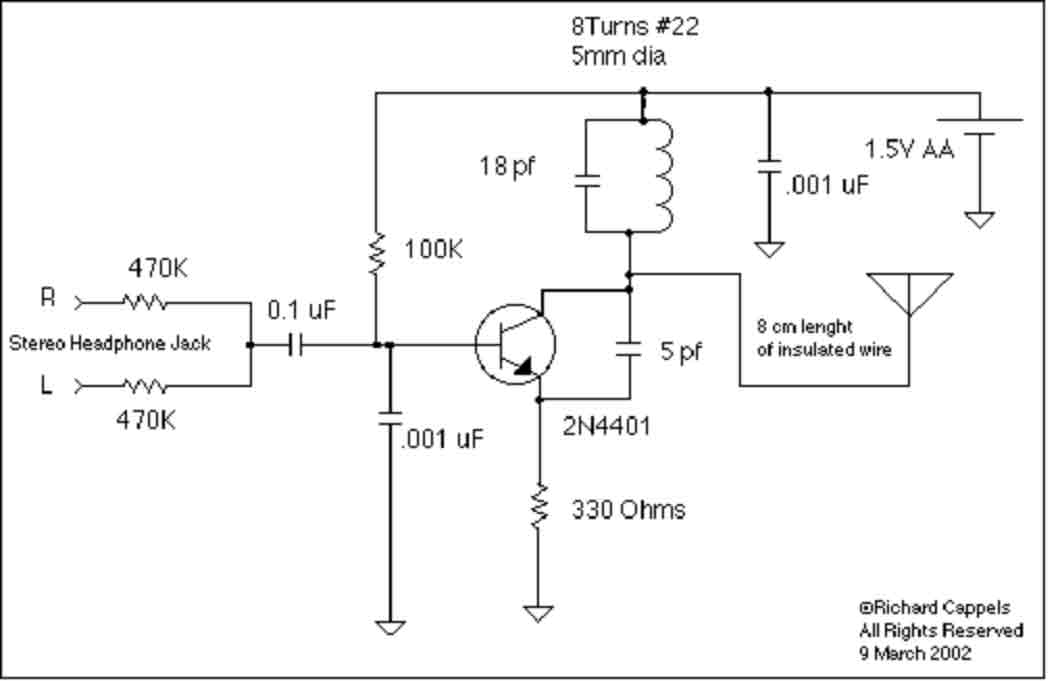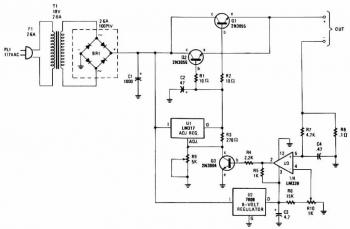
12Vdc Mobile Battery Charger

This circuit provides an output of up to 20 V from a 12-V automotive supply, enabling constant current charging of NiCad battery assemblies with a total voltage of approximately 18 V. The circuit utilizes a square-wave oscillator (VI) and diodes (D1 and D2) to couple the square wave to the 12-V battery supply, generating over 20 V DC. If this higher voltage is not required, switch S1 can be left open. Transistor Q1 functions as a current regulator to set the charging rate for the rechargeable battery. Resistor R4 is chosen from a selection table or can be replaced with a rotary selector switch.
This circuit is designed for efficient charging of nickel-cadmium (NiCad) batteries, which are commonly used in various applications due to their reliability and performance characteristics. The square-wave oscillator (VI) is a critical component that generates a square wave signal, which is essential for boosting the voltage from the 12-V automotive supply. The diodes (D1 and D2) are employed to rectify the oscillating signal, ensuring that the output voltage exceeds 20 V DC, which is necessary for effective charging of the NiCad batteries.
The inclusion of switch S1 offers flexibility in the circuit operation. When S1 is open, the circuit operates without the boosted voltage, allowing for standard charging conditions. This feature is particularly useful in applications where the higher voltage is not required or could potentially damage sensitive components.
Transistor Q1 acts as a current regulator, which is vital for controlling the charging rate of the battery. By maintaining a consistent current flow, Q1 helps prevent overcharging, which can lead to battery damage or reduced lifespan. The selection of resistor R4 plays a significant role in determining the precise charging current. Users can select R4 from a predefined table based on the desired charging current, or utilize a rotary selector switch for adjustable settings. This adaptability allows for fine-tuning of the charging process, accommodating different battery capacities and conditions.
Overall, this circuit represents a robust solution for charging NiCad batteries from an automotive power source, combining simplicity with effective voltage boosting and current regulation. The design emphasizes safety and versatility, making it suitable for various charging applications. This circuit provides up to 20 V output from a 12-V automotive supply, to enable constant current charging o f Nicad battery assemblies up to about 18 V total. VI forms a square-wave oscillator, Dl and D2, coupling this square wave to the 12-V battery supply to obtain over 20 Vdc. If this is not needed, SI is left open. Ql forms a current regulator to determine the charging rate of the rechargeable battery. R4 is selected from the table or it can be switched with a rotary selector switch.
This circuit is designed for efficient charging of nickel-cadmium (NiCad) batteries, which are commonly used in various applications due to their reliability and performance characteristics. The square-wave oscillator (VI) is a critical component that generates a square wave signal, which is essential for boosting the voltage from the 12-V automotive supply. The diodes (D1 and D2) are employed to rectify the oscillating signal, ensuring that the output voltage exceeds 20 V DC, which is necessary for effective charging of the NiCad batteries.
The inclusion of switch S1 offers flexibility in the circuit operation. When S1 is open, the circuit operates without the boosted voltage, allowing for standard charging conditions. This feature is particularly useful in applications where the higher voltage is not required or could potentially damage sensitive components.
Transistor Q1 acts as a current regulator, which is vital for controlling the charging rate of the battery. By maintaining a consistent current flow, Q1 helps prevent overcharging, which can lead to battery damage or reduced lifespan. The selection of resistor R4 plays a significant role in determining the precise charging current. Users can select R4 from a predefined table based on the desired charging current, or utilize a rotary selector switch for adjustable settings. This adaptability allows for fine-tuning of the charging process, accommodating different battery capacities and conditions.
Overall, this circuit represents a robust solution for charging NiCad batteries from an automotive power source, combining simplicity with effective voltage boosting and current regulation. The design emphasizes safety and versatility, making it suitable for various charging applications. This circuit provides up to 20 V output from a 12-V automotive supply, to enable constant current charging o f Nicad battery assemblies up to about 18 V total. VI forms a square-wave oscillator, Dl and D2, coupling this square wave to the 12-V battery supply to obtain over 20 Vdc. If this is not needed, SI is left open. Ql forms a current regulator to determine the charging rate of the rechargeable battery. R4 is selected from the table or it can be switched with a rotary selector switch.





